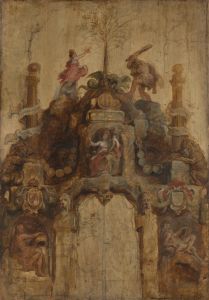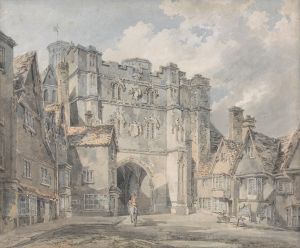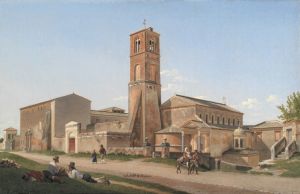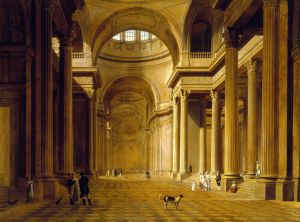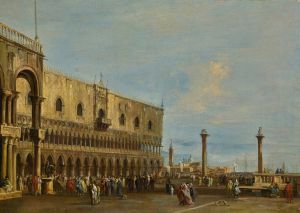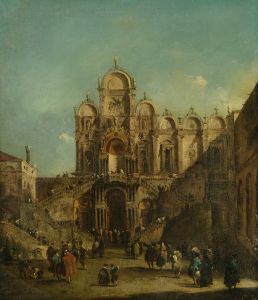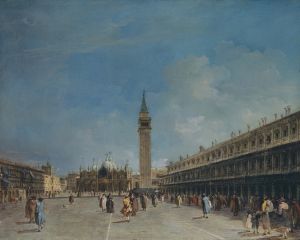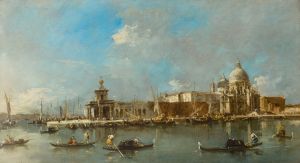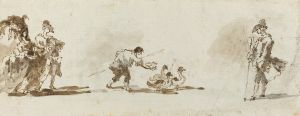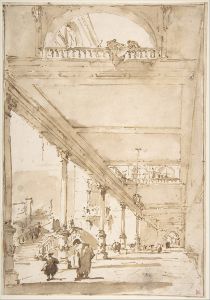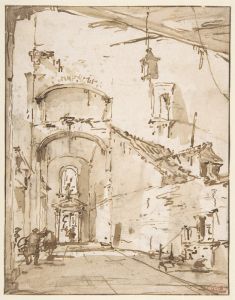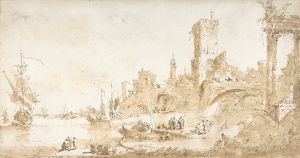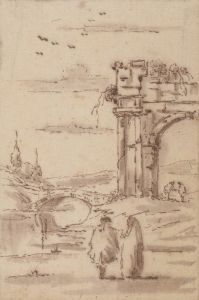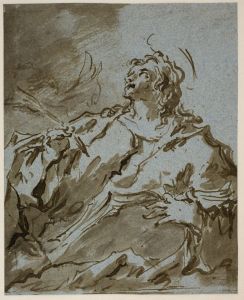
An architectural capriccio
A hand-painted replica of Francesco Guardi’s masterpiece An architectural capriccio, meticulously crafted by professional artists to capture the true essence of the original. Each piece is created with museum-quality canvas and rare mineral pigments, carefully painted by experienced artists with delicate brushstrokes and rich, layered colors to perfectly recreate the texture of the original artwork. Unlike machine-printed reproductions, this hand-painted version brings the painting to life, infused with the artist’s emotions and skill in every stroke. Whether for personal collection or home decoration, it instantly elevates the artistic atmosphere of any space.
Francesco Guardi, an eminent Venetian painter of the 18th century, is celebrated for his captivating vedute, or view paintings, which vividly capture the essence of Venice. Among his notable works is "An Architectural Capriccio," a painting that exemplifies his skill in blending real and imagined architectural elements to create a fantastical scene. This artwork is a prime example of the capriccio genre, which was popular during the Baroque and Rococo periods. Capriccio paintings are characterized by their imaginative landscapes that combine architectural elements from various sources, often juxtaposing real buildings with fictional ones to create an idealized or whimsical setting.
"An Architectural Capriccio" showcases Guardi's mastery in rendering architectural details with precision while also infusing the scene with a sense of fantasy. The painting features a collection of classical and Renaissance architectural elements, such as columns, arches, and domes, arranged in a harmonious yet imaginative composition. This approach allows viewers to appreciate the grandeur and elegance of the structures while also engaging with the playful and creative aspects of the artist's vision.
Guardi's technique in this painting reflects his adept use of light and shadow to create depth and atmosphere. His brushwork is characterized by a loose, fluid style that captures the ephemeral quality of light and the vibrant atmosphere of Venice. The use of color in "An Architectural Capriccio" is particularly noteworthy, with a palette that includes soft blues, warm earth tones, and delicate whites, contributing to the dreamlike quality of the scene.
The painting also reflects the influence of Guardi's Venetian contemporaries, such as Canaletto, who was renowned for his precise and detailed vedute. However, unlike Canaletto's more topographically accurate works, Guardi's capriccios are more concerned with evoking mood and atmosphere than with depicting specific locations. This distinction highlights Guardi's unique contribution to the genre, as he balances the depiction of architectural splendor with a sense of imaginative freedom.
"An Architectural Capriccio" is also significant for its reflection of the cultural and artistic milieu of 18th-century Venice. During this period, Venice was a hub of artistic innovation and a center for the exchange of ideas. The city's rich architectural heritage and its status as a major trading port provided artists like Guardi with a wealth of inspiration and subject matter. The capriccio genre, in particular, allowed artists to explore the interplay between reality and imagination, offering a creative outlet for expressing the grandeur and complexity of Venetian architecture.
Today, Francesco Guardi's works, including "An Architectural Capriccio," are celebrated for their artistic merit and historical significance. They offer valuable insights into the artistic practices of the time and continue to captivate audiences with their blend of realism and fantasy. Guardi's paintings are housed in major art collections and museums around the world, where they are studied and admired for their contribution to the development of landscape and architectural painting.
In summary, "An Architectural Capriccio" by Francesco Guardi is a testament to the artist's skill in creating imaginative and atmospheric compositions that celebrate the beauty and complexity of architectural forms. Through his innovative approach to the capriccio genre, Guardi has left a lasting legacy that continues to inspire and enchant art enthusiasts and scholars alike.





